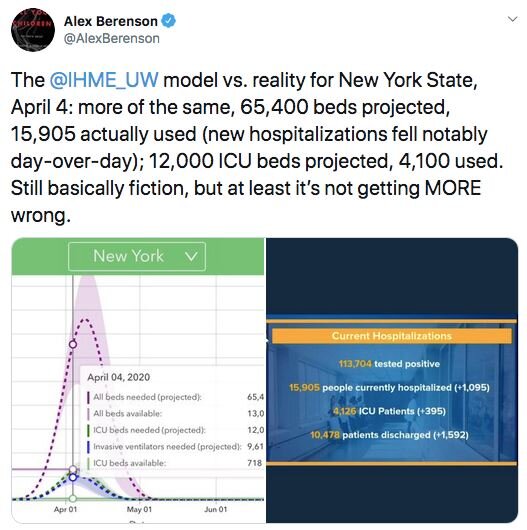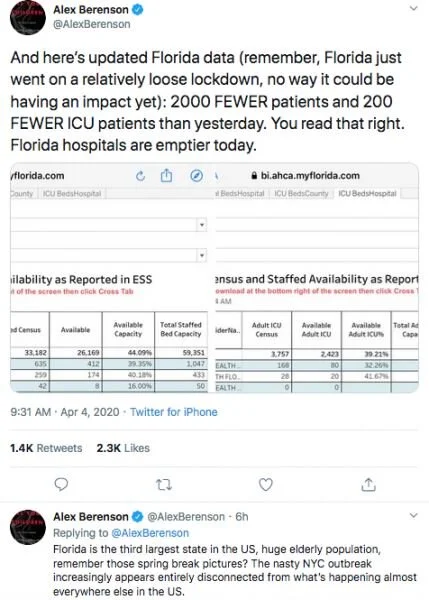How reliable are the models being used to justify shutting down the world? Not very.
/South Korea reports that new cases of Kung Flu have dropped below 50 a day. That brings the national cumulative tally to 10,284. The death toll rose by three to 186, while another 135 people have recovered from the virus for a total of 6,598. So 10,284 infections, 6,598 recoveries, 186 deaths.
In England Neil Ferguson, the Imperial College statistician who made the model so often cited by medical authorities and the media, “revised” his estimate of 500,000 deaths in England to 20,000,. Mr. Ferguson’s prediction of 2.2 American deaths is equally suspect.
How about he University of Washington model, which has been given as much or more credence than Imperials? Same story.
Over at Town Hall they ask “Is what we’re being told about the coronavirus pandemic wrong?”
There’s no question the coronavirus is deadly and dangerous, but is it going to kill hundreds of thousands in the US and millions around the world? We have no idea. All we have are guesses. But if you’re going to destroy the economy and severely restrict people’s lives, you’d better have some damn good information backing up your actions. There are questions about the computer models being used to impose just that.
One prominent model in the shutdown is from the University of Washington, from their Institute for Health Metrics and Evaluation (IHME), funded by Bill and Melinda Gates. How closely does what they predicted track with reality so far? Turns out, not so well.
While the reporting data from some states are lagging, others have provided information that calls into question the validity of the whole model, and with it, all the actions taken by government.
On April 4th, for example, the IHME model predicted there would be between 120,963 and 203,436 Americans requiring hospitalization, with the average of that range being 164,745. In reality, there were 18,998.
Before your jaw goes through the floor, it must be noted that not all states have reported their numbers, so the actual total is incomplete. The largest states have reported, so the missing numbers from places like Kansas or even Michigan will add to that total, but still will not get it anywhere near the projections.
That’s just hospitalizations, when it comes to intensive care beds, the difference between the projections and reality show an equally large gap. The average projected ICU beds needed on April 4th was 31,057; the reality was 4,686. That’s across the country, not just New York. Even after factoring in the caveats about missing states, that’s a miss akin to swinging and striking out on a pickoff to second base.
If there’s any bright side to this disaster it’s that when we come out of it and the country turns its skepticism and fury on these expert modelers, we might also reconsider the validity of the global warming models so dear to the hearts of the collectivists.
UPDATE: Washington State is returning 400 of the 500 ventilators received from the federal government, as they aren’t needed. Governor Inslee credits the imposition of his stay-at-home order of March 25th with slowing the disease, rather than admit that the models he was relying on were wrong. If a ten-day shutdown was that effective, great. I remain skeptical.





